
~~~~~~~~~~~~~~~~~~~~~~~~~~~~~~~~~~~~~~~~~~~~~~~~~~~~~~~~
TBPNews #161-Jan 5, 2014
~~~~~~~~~~~~~~~~~~~~~~~~~~~~~~~~~~~~~~~~~~~~~~~~~~~~~~~~
>>>> Tunnel Boat Performance News
>>>>>> (over 5000
members!) ![]()
![]()
========================================================
See all TBPNews archives at: TBPNews
In this issue:
1)
Great New Articles Coming Soon!
2) Solar-Powered Boat Makes Unmanned Transatlantic Journey
3) Carella/Torrente 1-2 Finish in 2013 UIM F1 H2O World Championship
5) FEATURE: "How Deadrise Affects Vee-Hull Performance" (Part 1)"
6) Tunnel Boat Design Program software, Version 7.15 RELEASED!
7) Jimboat's NEW Feature Articles & Reports
******************** TBPNews ***********************
1) Great New Articles Coming Soon!
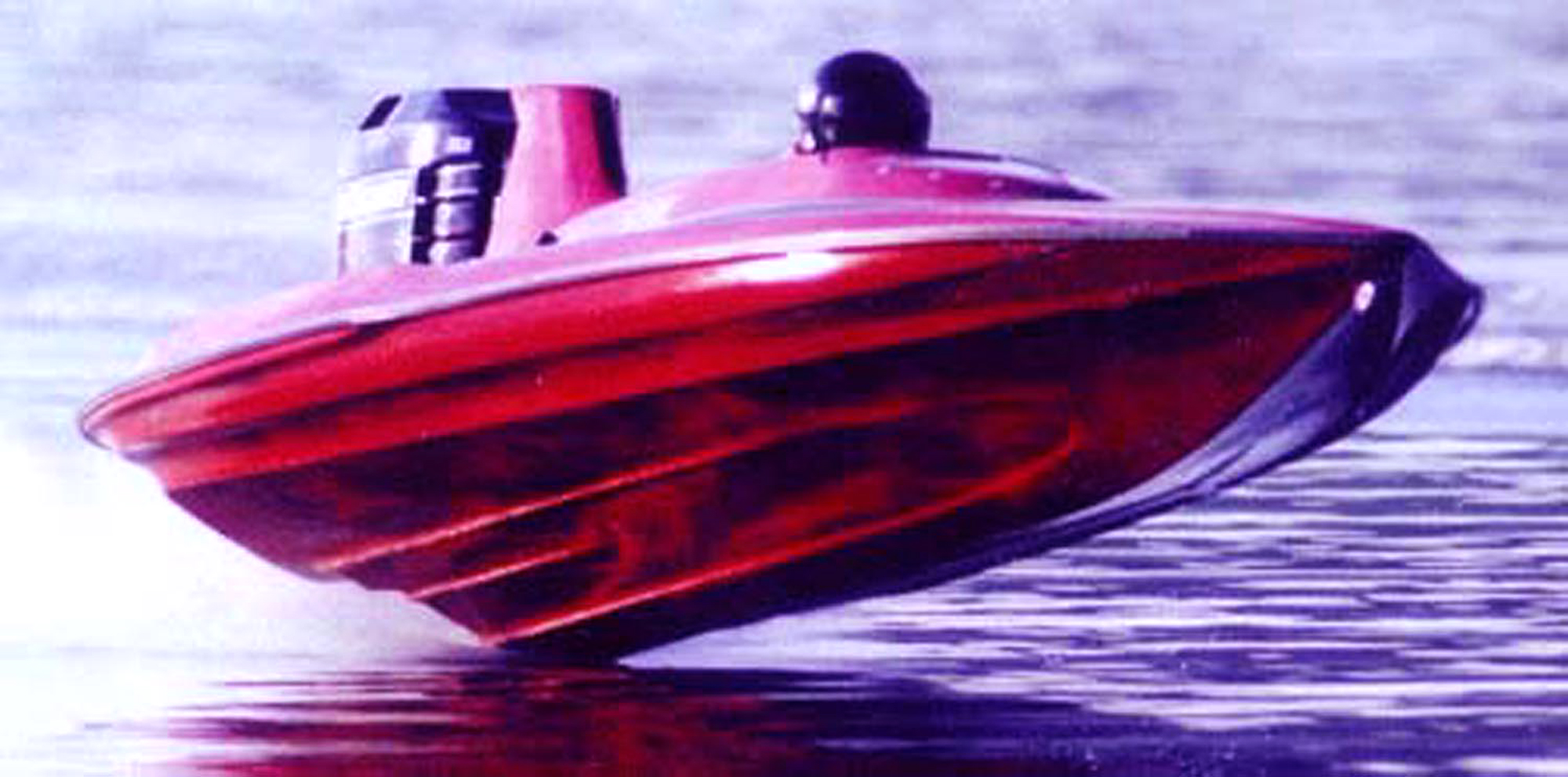 This month Jimboat outlines "How Deadrise Affects Vee Hull Performance. There are dozens of design and setup factors that influence the performance of powerboat hulls, and most of these features also influence each other. This makes prediction of performance a tricky business. The good news is that most of these factors can be calculated at the design stage, and thus we can design a boat for the intended performance. Check out Jim's new technical article here:
This month Jimboat outlines "How Deadrise Affects Vee Hull Performance. There are dozens of design and setup factors that influence the performance of powerboat hulls, and most of these features also influence each other. This makes prediction of performance a tricky business. The good news is that most of these factors can be calculated at the design stage, and thus we can design a boat for the intended performance. Check out Jim's new technical article here:
More to Come! - In the coming issues of TBPNews, Jimboat's articles will discuss:
- Anatomy of a BlowOver!
- Surface Finish - How To Prepare Your Hull Bottom For Speed & Efficiency
- How Tunnel height works to your performance advantage
- The In's and Out's of Foot Throttles
- Will Lifting Strakes Make My Boat Go Faster?
- How Does a Tunnel Boat Fly?
- Step Design in Powerboats
- The Classic Minimax 'SeaFlea'
...and more design developments, racing news, etc!
******************* TBPNews ******************* [return to top]
2) Solar-Powered Boat Makes Unmanned Transatlantic Journey
 Each year thousands of yachtsmen cross the Atlantic Ocean, but only few of their voyages set records. One crossing taking place now just might do that. A group of young men from Rhode Island are attempting an autonomous transatlantic crossing with a solar-powered boat they built in their spare time. David Schneider, a senior editor at IEEE Spectrum magazine, was at the midnight launch of their robotic boat called
“Scout.”
Each year thousands of yachtsmen cross the Atlantic Ocean, but only few of their voyages set records. One crossing taking place now just might do that. A group of young men from Rhode Island are attempting an autonomous transatlantic crossing with a solar-powered boat they built in their spare time. David Schneider, a senior editor at IEEE Spectrum magazine, was at the midnight launch of their robotic boat called
“Scout.”
The best way I can think of to introduce this story is to read from what’s printed on the back of the boat in three languages. It says: “Hello I’m Scout, a fully autonomous boat attempting to cross the Atlantic Ocean from Tiverton, Rhode Island, to Sanlucar de Barrameda, Spain. I was built over the course of three years by a group of young optimists after a successful Kickstarter campaign. If you have found me, please contact our ragtag group of aspiring engineers."
Two of the engineers are Dylan Rodriguez, a 21-year-old senior at Worcester Polytechnic Institute in Massachusetts and Max Kramers, a 26-year-old recent graduate from the University of Rhode Island.
Check out more at boatingworld.com
******************* TBPNews ******************* [return to top]
3) Carella/Torrente 1-2 Finish in 2013 UIM F1 H2O World Championship
 December 24, 2013 - Italian driving sensation Alex Carella for the third straight season came from behind climbing the ladder of success once again to win the UIM F1 H2O World Championship in 2013. The 27 year-old from Piacenza led a strong Qatar Team for a resounding one-two finish in the drivers championship out-dueling his American teammate Shaun Torrente by just six points in the end 80 to 74. The Qatar Team dominated the
prestigious Team Championship as well winning by a comfortable 80 points for the highly skilled multi-national organization based out Doha .
December 24, 2013 - Italian driving sensation Alex Carella for the third straight season came from behind climbing the ladder of success once again to win the UIM F1 H2O World Championship in 2013. The 27 year-old from Piacenza led a strong Qatar Team for a resounding one-two finish in the drivers championship out-dueling his American teammate Shaun Torrente by just six points in the end 80 to 74. The Qatar Team dominated the
prestigious Team Championship as well winning by a comfortable 80 points for the highly skilled multi-national organization based out Doha .
The seven month journey began in early June, in Brasilia, at the series first ever event on the South American continent, with Finnish two-time World Champion Sami Selio of the Mad-Croc Baba Racing Team stealing the spotlight winning from pole position with the Qatar Team duo reaching the podium for the first of three times during the year with Torrente finishing ahead of Carella in two of the three opportunities.
In mid-summer in late July the tour was off to historic Kyiv for the Grand Prix of Ukraine and this time the story was all about French driver Philippe Chiappe of the CTIC China Team who captured his first victory in his 11 year-career making it a very popular victory throughout the paddock for the likeable driver from Rouen.
As the series headed to the Far East for the fall season stopover in the Southern city of Liuzhou at the Grand Prix of China, it was once again time for the Italian to exert himself. Alex knew that he had to make a move if he wanted to win another title. He did just that, winning for the second year in a row from pole position.
His team member Torrente, who was glued right behind Alex the first half of the race, had disaster strike when a brief mechanical problem moved him down to sixth while Sami Selio came home second and Chiappe finished in a close third.
It was off to Doha and the 10th Grand Prix of Qatar with Alex nailing down pole position just ahead of his teammate Torrente. It looked it would finish that way in the race as well, until, with just three laps from the end, Alex's engine gave out handing his friend Shaun the victory. The Floridian had earned his first career victory on the tour and had now moved into first place in the championship with 55 points.
The win in Doha wasn't without drama. Shaun and fellow American Terry Rinker of Team Azerbaijan were rounding the turn leading to the start/finish line when they collided ending Rinker's day with a barrel roll while Shaun was able to cruise to the win via a yellow flag two laps later.
With just two races to be run in the United Arab Emirates, the lead in the championship had changed for the fourth straight race in a row. Bad luck once again visit the Florida driver as Torrente failed to get a lap in the final Q3 qualifying session needing an engine change and moving him back to the 11th starting position for the race.
Meanwhile, Sami Selio got his new boat working to perfection grabbing pole position while trying to forget his own bad luck suffered during a start line accident he had suffered in Doha a week before destroying his number one race boat. Sami, despite this, dominated the day reasserting himself to the top of drivers championship with a win in Abu Dhabi for his 12th career victory tying Francesco Cantando of the Singha F1 Team as the winningest most active driver on the tour.
In one of the closest finishing scenario's in the 30 years of racing on the UIM F1 H2O World Championship tour, four drivers were still in the hunt in their chase for glory chasing the title. It would all come down to this one race.
When the final checkered flag fell to end the 2013 season, it was Alex Carella setting the stage with a perfect run. He never once made a wrong during the event leading from start to finish for all 38 laps and earning his eighth career victory and adding another World Championship to his resume in just 25 career starts. Shaun Torrente would make it a Qatar Team one-two sweep, pushing Alex early and then realizing he didn't have an answer for the Italian. Shaun then decided to be cautious by backing down enough to finish third. Philippe Chiappe pushed Carella to the end finishing second and third overall for the season with 69 points.
There will be once again be many challengers from around the globe looking to claim his thrown in 2014. This is what makes this championship so great!
For more information, go to: f1h2o.com
******************* TBPNews ******************* [return to top]
4) Great Powerboat Videos
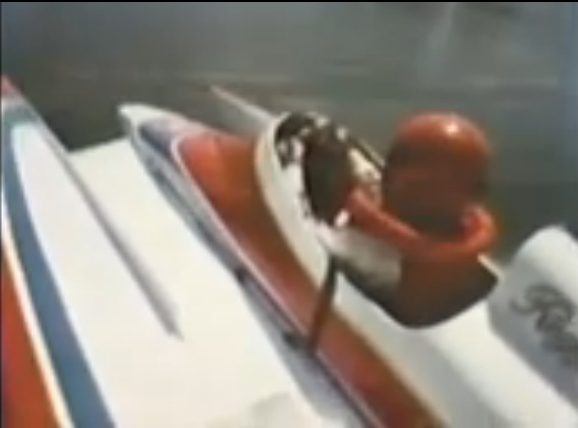 Check
out these great videos....
Check
out these great videos....
..........Australian Racing Crash
..........Flat Out - Them Mercury Racing Story
..........Tai longtail boat racing video
******************* TBPNews ******************* [return to top]
5) FEATURE: "How Deadrise Affects Vee-Hull Performance" (Part 1)"
...by Jim Russell
There are dozens of design and setup factors that influence the performance of powerboat hulls, and most of these features also influence each other. This makes prediction of performance a tricky business. The good news is that most of these factors can be calculated at the design stage, and thus we can design a boat for the intended performance. One key factor of major influence on the performance of a Vee hull is Deadrise.
Deadrise is the measurement of the angle between the bottom of a boat (keel) and its widest beam of the planing surface. A hull with a zero degree deadrise has a flat bottom – a deep Vee hull might have a deadrise of more than 20 degrees.
 The deadrise angle of a Vee hull’s lifting surfaces can have a big influence on the performance of the boat. A shallow deadrise will provide the most efficient lift, but deeper deadrise angles will make a much cleaner presentation to the water surface in rougher water conditions.
The deadrise angle of a Vee hull’s lifting surfaces can have a big influence on the performance of the boat. A shallow deadrise will provide the most efficient lift, but deeper deadrise angles will make a much cleaner presentation to the water surface in rougher water conditions.
A flat-bottomed boat rises onto a plane quickly and provides a comfortable, stable ride in calm water - but it can pound heavily in rough water. A deep-Vee hull provides a softer ride in heavier waves but will be slower to get planing. In many cases, a hull will be designed for a multi-purpose operation with a compromise deadrise angle in the range of 15 degrees. Like all aspects of powerboat performance, the design decisions are usually a compromise.
Deadrise angles are not always constant along the length of the hull; they often vary progressively from bow to stern. A deeper Vee at the bow can allow the hull to cut through waves more smoothly, while lower deadrise sections aftward can make for more efficient planing. This is called a ‘warped plane Vee’. Sometimes a hull will have a Vee with a higher deadrise at the keel and lower deadrise at the outermost chines. This is called a ‘Variable deadrise’ (more about both of these concepts later).
How Much Vee? (Deep, Shallow, Moderate or Modified Deadrise)
The amount of deadrise designed into a hull is typically driven by the intended use of the boat. So there can be pro’s and con’s to each Vee concept.
Deep Deadrise - Hulls with a steep deadrise angle can slice through the waves, providing a smoother ride. When conditions get really rough, the superior ride of a deep Vee hull can be the fastest or most efficient design of the day. As the hull goes faster, the hull can ride “higher” on the Vee, reducing wetted area for less drag. Higher deadrise is also less susceptible to Porpoising actions. Due to the very deep Vee shape however, these hulls have a deeper draft, don’t like non-planing speeds and demonstrate poorer fuel economy at slower speeds. The very deep Vee hull also has less lateral stability and more roll in turns. Perhaps more important to some boaters, the deep Vee hull tends to punch right through waves (easier) instead of going over them, so it can be a wet ride in heavy seas (inconvenient).
Deep Deadrise Hull With Chines - The addition of chines (spray rails or lifting strakes) to a deep Vee hull can provide some of the advantages of a deeper V, while reducing some of the disadvantages. Effectively designed chines provide some flat (lower deadrise) lifting surface, which means more lift compared to the higher deadrise angles. The boat with pronounced chines will also draw less water, will have greater roll stability, and the chines can deflect spray generated. The addition of chines can also cause a little more pounding in heavy waves if they are large enough.
Low or Shallow Deadrise Hull – A shallow deadrise generates the most efficient lift. Flats boats often have very shallow deadrise hulls - not pleasant for choppy water, but great for running in shallow water and getting on plane quickly. Such hulls sometimes have a steeper deadrise angle forward, transitioning into the much shallower deadrise swiftly as the hull beam widens out aftward. If the bow of the boat is kept down, such a design can slice through small waves better, but once the waves are big enough the aftward flat sections are going to pound.
 Moderate Deadrise - Bay boats often have a moderate deadrise angle, sometimes with chines. A moderate deadrise angle hull will not slice through waves as cleanly as a deep Vee hull, but can be more stable, will not roll as much, is fast and fuel-efficient, does not draw much water. Of course, the moderate deadrise hull will not go through waves as readily as a deeper Vee design, but also will not broach or heel excessively in turns, and is often a pretty dry ride. It's a good
general-use compromise.
Moderate Deadrise - Bay boats often have a moderate deadrise angle, sometimes with chines. A moderate deadrise angle hull will not slice through waves as cleanly as a deep Vee hull, but can be more stable, will not roll as much, is fast and fuel-efficient, does not draw much water. Of course, the moderate deadrise hull will not go through waves as readily as a deeper Vee design, but also will not broach or heel excessively in turns, and is often a pretty dry ride. It's a good
general-use compromise.
Variable Deadrise Hull - In a variable deadrise hull, the center section (near the keel) is made with a deep Vee deadrise angle, then the angle is shallower in the next sections outboard, and shallower still out at the edges (chine). When the boat is on plane, the outside sections with low deadrise are not wetted as the other sections slice through waves. The advantage of the variable deadrise design is allowing the boat to plane at lower speeds compared to standard deadrise. This means less power required and better fuel efficiency during lower to mid velocity ranges
Warped Plane Vee – This concept is another very common design compromise that has the best advantages of all deadrise variations. Deadrise varies from higher at the bow, lower at midships and flatter deadrise at the transom. This gives a ‘twist’ or warp of the deadrise, and the chine will run downward in profile lengthwise from bow to transom. This concept provides good wave-breaking capabilities of the deep Vee at the bow and lift-efficiency of low deadrise aftward in the region of planing surfaces. Many Vee hulls exhibit this variation in deadrise.
Vee with Pad – Performance Vee hulls sometimes employ a centre located flat pad design for higher lift. This pad allows a more efficient planing surface aft, with an increase in top speed. Pads are usually part of a Vee hull design as a method of increasing total hydrodynamic lift capability and increasing top speed. A flat pad (zero deadrise) is the most efficient lifting surface and so generates high lift and less drag at higher velocities. There is some corresponding sacrifice of a little softness in the ride, but with this modified Vee-type hull design, super-fast speeds are achievable!
Engineering the Deadrise Angle - The Lift generated by a planing vee bottom is dependent on many factors - angle of attack, width/length ratio (called Aspect Ratio), velocity, deadrise, and hull aerodynamics too.
Next month's issue of TBPNews will look at how we can design the optimum deadrise for the desired hull application.
/Jimboat
[Ed. Note: Do you have any of your own questions on performance hull design? Send your question or story to Jimboat@aeromarineresearch.com ]
See more Performance Articles at: aeromarineresearch.com/articles.html **
Read more about Vee Hull & Tunnel Boat design and setup in the world acclaimed "Secrets of Tunnel Boat Design" book
******************* TBPNews ******************* [return to top]
6) NEW! Tunnel Boat Design Program software, Version 7.15 RELEASED! - Jan 01, 2013
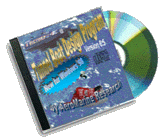 NEW Release of Tunnel Boat Design Program software. NEW Release (Jan 01, 2013 includes Vee Boat Design Program (VBDP) in the same package, with all the other great feature upgrades!
NEW Release of Tunnel Boat Design Program software. NEW Release (Jan 01, 2013 includes Vee Boat Design Program (VBDP) in the same package, with all the other great feature upgrades!
Check out the new TBDP performance software V7.15 at: aeromarineresearch.com/tbdp6.html
And... check out the new VBDP performance software V7.15 at: aeromarineresearch.com/vbdp.html
The Tunnel Boat Design Program (TBDP/VBDP) software makes performance analysis and design, fast and simple for all types of tunnel hulls, power catamarans, modified tunnels, vee hulls and vee-pad hulls.
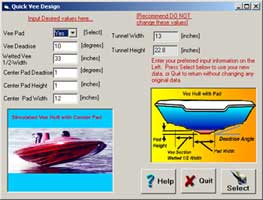 The NEW TBDP and VBDP incorporates the same ("AR Analysis") design approach as documented in the Secrets of Tunnel Boat Design book. The super power of the software allows for even more comprehensive analysis, employing engineering techniques that include detailed aerodynamic, hydrodynamic and stability calculation methods that are key to proper Tunnel hull design and accurate performance prediction. TBDP/VBDP is a high performance software, but it's not just for high performance applications. Great for recreational, commercial, fishing, high performance and racing tunnels, powercats and vee hulls (even whitewater jet hulls, RC boats, Fishing/Utility tunnels, modified tunnel (Mod-VP), modified Vee hulls, bass boats) - and NOW for Vee hulls & Vee-Pad hull designs!
The NEW TBDP and VBDP incorporates the same ("AR Analysis") design approach as documented in the Secrets of Tunnel Boat Design book. The super power of the software allows for even more comprehensive analysis, employing engineering techniques that include detailed aerodynamic, hydrodynamic and stability calculation methods that are key to proper Tunnel hull design and accurate performance prediction. TBDP/VBDP is a high performance software, but it's not just for high performance applications. Great for recreational, commercial, fishing, high performance and racing tunnels, powercats and vee hulls (even whitewater jet hulls, RC boats, Fishing/Utility tunnels, modified tunnel (Mod-VP), modified Vee hulls, bass boats) - and NOW for Vee hulls & Vee-Pad hull designs!
NEW Version 7.15 NOW RELEASED!
 Accurate Performance Prediction through full velocity range; Dynamic Stability Analysis; Hull design optimization.
Accurate Performance Prediction through full velocity range; Dynamic Stability Analysis; Hull design optimization.
BIG NEW FEATURES...YOU ASKED FOR IT...NOW WE'VE GOT IT!
This is the ONLY software specifically for design, performance analysis and setup of tunnel hulls and performance Vee hulls!
*** New Performance Summary Wizard with key indicators and recommendations! Optimization of hull design features. New aerodynamic algorithms. NEW USER picture import feature. New CG import feature. Dozens of NEW features - including VEE HULL DESIGN software INCLUDED.
*** Vee Hull Design Feature - full Vee Hull & Vee-Pad Hull design & performance analysis.
*** Porpoise Analysis - NEW TBDP V7 BREAKTHROUGH FEATURE! - New analysis tool! XPorpoise is an engineering tool developed by AR that predicts your hull's inherent susceptibility to instabilities that lead to porpoising.
see more on the TBDP/VBDP features here.
******************* TBPNews ******************* [return to top]
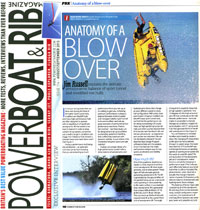 NEW - Author Jim Russell outlines secrets of
'Anatomy of a BlowOver!'
NEW - Author Jim Russell outlines secrets of
'Anatomy of a BlowOver!'
Jimboat reviews 'Step On It! - The In's and Out's of Foot Throttles'
Jimboat reviews 'Outboard Jack Plates for Performance in Powerboats'
Jimboat outlines secrets of 'Step Design in Powerboats'
Jimboat outlines secrets for 'Successful Propeller Testing for Performance'
Jimboat details the speed secrets of 'Vee pad design', vee hull design and performance powerboat design
Jimboat explains 'Gearcase & Propeller BlowOut' (RIB magazine April 2011 issue)
 Jimboat
explains 'Chine Walking' (RIB magazine Dec 2010 issue)
Jimboat
explains 'Chine Walking' (RIB magazine Dec 2010 issue)
Jimboat explains 'How Trim Angle and engine height affects performance' (RIB magazine Jan 2011 issue)
Jimboat interviews in RaceBoat International magazine, the newest up-and-coming star of F1 H20 World Championship circuit, Shaun Torrente together with his Crew Chief Ted Gryguc.
[Jimboat writes Feature articles in PowerBoat & RIB magazine, HotBoat, Scream&Fly magazine, Family&Performance Boating,
Performance Powerboat, RIB magazine, World of Powerboats, RaceBoat International, SEA Yachting, Extreme Boats magazines].
-
Tunnel
Vision - 'How Do Tunnel Boats Fly?' - HB Nov/Dec 2008
- 'Why
Do Boats Create Rooster Tails?' -
HB-August 2008
- 'What
a Blow Out!' - "Gearcase & Propeller Blowout- Why it Happens & How to Fix it" -
HB-June 2008
-
'Walk on the
Wild Side' - "Chine Walk - Why it happens & How to Fix it" - HB-Jan
2008
- 'Hump
Zone' - "Why does your Boat Porpoise?" - HB-April 2007
-
'The Bottom Line'-"Why does a
Pad make a Vee Hull faster?" -
F&PB-Sept 2005
- "10
Smokin' Speed Secrets Revealed..." -
HB-Feb2005
-
"Winterizing your Performance Outboard" - F&PB-Jan2005
-
"What a Drag" - 'Trim Angle & Engine Height Can Reduce Drag and
Increase Speed' - HB-Sept2004
-
"10 Safety Tips" - 'Ten Safety Ideas for High Performance Go-Fast
Boats' - HB-Aug2004
- "Flight
Path" - 'Where does Lift Come From?' - HB-April2004
- "Rocket
Science" - 'How To Increase Your Hull's Design Speed With Aerodynamics' -
World of Powerboats-Winter2004
-
"Tunnel
Vision" - 'What Factors Influence Tunnel Hull Performance' - Extreme
Boats-April2003
- "Step-by-Step"
-
'Step
Design in Powerboats' - TBPNews #88, October 2005
******************* TBPNews
*******************
[return to top]
See you next time!
/Jimboat
>>>>>>>>>>>>>>>>>>>>>
Let us know ideas you have, requests for articles, questions or comments on TBPNews. Send
comments to TBPNews@aeromarineresearch.com
>>>>>>>>>>>>>>>>>>>>>>>>>>>>>>>>>>>>>>>>>>>>>>>>>
 Get your full, illustrated,
13th
edition copy of the world acclaimed "Secrets
of Tunnel Boat Design" book;
Get your full, illustrated,
13th
edition copy of the world acclaimed "Secrets
of Tunnel Boat Design" book;
"History
of Tunnel Boat Design" book, "Secrets
of Propeller Design" book, the "Tunnel
Boat Design" software
for tunnel and high-performance Vee-hull design,
and "PropWorks2"
software for speed prediction and propeller
selection at the AeroMarine
Research web site: http://www.aeromarineresearch.com